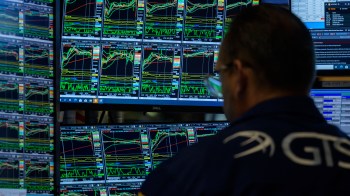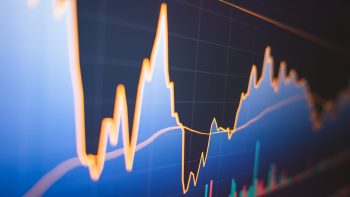Weighing GDP dark matter
Share Now on:
Weighing GDP dark matter
KAI RYSSDAL: How ’bout this. I’ll give you a number. You try to figure out what it means. The Commerce Department announced this morning the economy grew at an annual rate of 2.6 percent in the second quarter. It’s a statistic known as gross domestic product.
The dictionary definition is that GDP is the total value of all goods and services produced in the United States. That’s great, but it gets us back to the beginning. What does it mean? Yeah, you can measure airplanes or refrigerators. But what about the stuff that’s less tangible? That’s harder to quantify?
Economists call it dark matter. And Marketplace’s Hillary Wicai reports the government’s trying to get an economic handle on it.
HILLARY WICAI: It may be a new economy, stupid, but we’re all still struggling with just how to measure it. It’s like the classic Saturday Night Live press conference skit with Chevy Chase and Jane Curtain.
JANE CURTIN:“Mr. President, you said that the Humphrey-Hawkins bill will cost a possible $60 billion, but isn’t it true that the jobs provided by the bill will create up to $150 billion in increased production?”
CHEVY CHASE:“It was my understanding that there would be no math, during the debates.”
MARK ZANDI: That’s hilarious — that is hilarious. Well it does highlight the point that policymakers are making decisions based on data and statistics that are very arcane and only a handful of people truly understand.
That’s economist Mark Zandi. He’s one of many who’s happy that the Bureau of Economic Analysis is working on a new set of numbers that will eventually be released side-by-side with GDP. Currently, the hundreds of billions of dollars businesses spend each year on research and development are not counted toward economic growth. The new report will count R&D as an investment.
Economics professor Charles Hulten at the University of Maryland explains:
CHARLES HULTEN:“A company might decide it needs more machine tools and hire another 1,000 workers to produce them”
And under the current system, that would get counted as investment in GDP.
HULTEN: But another company that took the same number of workers and put them to work, not making more machines but making better machines, that investment wouldn’t be counted.”
In a preliminary study released today, the Bureau of Economic Analysis said that R&D accounted for 4.5 percent of growth in real GDP between 1959 and 2002. How big is that? Investment in bricks and mortar was just over 2 percent.
STEVE LANDEFELD: No one’s directly measured this in the past, so there is this puzzle about what causes productivity to go up.
Steve Landefeld is director of the Bureau. He says this new way of measuring R&D might help solve an economic mystery.
LANDEFELD:“The Bureau of Labor Statistics currently estimates about 40 percent of growth is not explained by increases in conventional inputs.
And taking the mystery out of economic growth will help policymakers. GDP helps the Federal Reserve Board, for example, set interest rates.
In Washington, I’m Hillary Wicai for Marketplace.
There’s a lot happening in the world. Through it all, Marketplace is here for you.
You rely on Marketplace to break down the world’s events and tell you how it affects you in a fact-based, approachable way. We rely on your financial support to keep making that possible.
Your donation today powers the independent journalism that you rely on. For just $5/month, you can help sustain Marketplace so we can keep reporting on the things that matter to you.


















